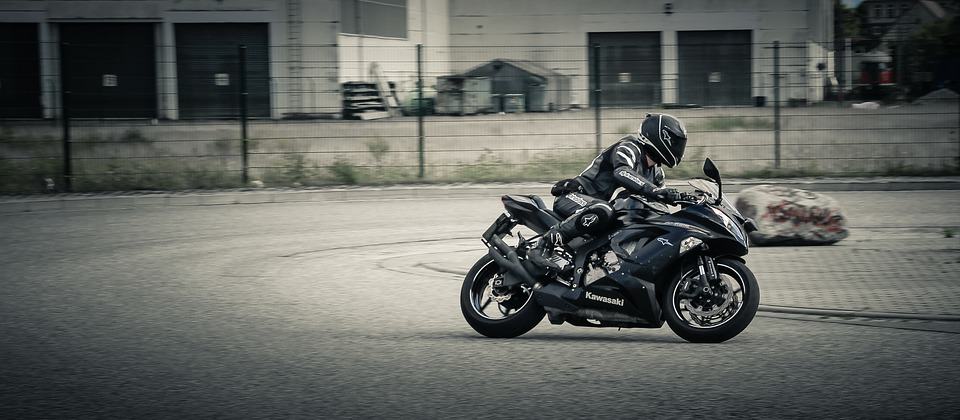
The iconic leaning to one side or the other on a motorcycle is not enough. The technique of smooth, yet safe turning is not such a simple matter. Check how to do it right!
It all starts with the throttle and then a few dozen meters before the turn. Lower the speed, easier to negotiate the turn. However if you are entering the turn at high speed, the gas will also be extremely important here. You should apply the throttle gradually, so that when you exit the turn, your bike will have the speed it had before the turn. Remember, reduce your speed slightly, enter the turn and apply the throttle lightly and gradually as you go through the turn. Why is it so important? Because it is with its help that you are able to exit the turn vertically. It is the balance of the forces acting on the bike. It is the throttle that regulates these forces!
Many people say that the most important thing is to position yourself properly, leaning so that the footrest rubs against the asphalt. Unfortunately, that’s not quite the case. If you’ve brought the footrest close to the asphalt, you probably haven’t raised the bike’s ground clearance when folded, and you certainly haven’t been adding gas. The point is that when you accelerate, you raise the ground clearance, so you can make maximum use of the space on the left or right side. The footrest then doesn’t bother you. Of course, this is more for advanced riders who have spent many hours on motorcycles. How does it look like for laymen? People who are just beginning their adventure with motorcycles?
There are a few rules you need to keep in mind even at low speeds and fairly gentle turns. This is mainly about body positioning during the turn. You have already learned the technique of operating the gas, which can be difficult to achieve at first, though. You have to get the hang of it. Gas in a turn? That’s the reality. As it turns out, the gas has already gotten many motorcyclists out of trouble. However, let’s move on to body positioning.
Let’s start with your head. When you are on the inside of the turn, keep your head close to the handlebars as you lean the bike. Next, the forearm – it should be sort of an extension of the handlebar axis in the case of the inside side, which is again the side you’re putting the motorcycle on. The other side can be a light counterweight, put your forearm comfortably on the tank or other part of the body. As a beginner, you should first learn how to properly position your head and shoulders when cornering.
As for the buttocks, at least one should be off the axis of the motorcycle. Professionals get to the point where both extend off the motorcycle, as does the knee. This is not easy to learn and requires practice, preferably on a track where you can control the falls (no other traffic in the form of pedestrians or cars). Next – the knees – this is from the inside of the turn, you should extend quite a bit beyond the axis of the motorcycle. Of course, this does not mean that you should immediately touch the asphalt, it simply allows you to better control the motorcycle when folded. Your outer knee should be touching the tank along with your thigh. You must always have a few points that will merge you with the motorcycle.
Why is body alignment so important? Again, it is about balancing the forces that act on the rider and the motorcycle while cornering. If you operate the throttle properly and add correct body positioning, you can be sure that even at high speeds the motorcycle will ride through the turn like a string.
(Photo: pixabay.com)